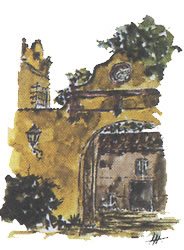ASTM D4300–23. Standard Test Methods for Ability of Adhesive Films to Support or Resist the Growth of Fungi.
Test accredited by ENAC (Spanish National Accreditation Entity).
This test method evaluates the ability of adhesive sheets to inhibit or support the growth of selected fungal species. Fungi can be inoculated on two agar substrates, one that promotes microbial growth (PDA), and one that does not (MSA). The method with PDA medium provides a complete medium for the growth of fungi and evaluates the adhesive sheet for its ability to resist the growth of fungi on its surface, as well as its ability to repel an abundant growth of fungi on the surface of adjacent agar. On the other hand, the method with MSA medium lacks a source of carbohydrates and provides a less favorable medium and evaluates the adhesive sheet, mainly for its ability to resist the growth of fungi on its surface.
The method depends on the physiological action of certain live microorganisms under a set of conditions, as well as on the efficacy of some biocides that may change during storage due to the chemical and thermal environment to which the components of certain adhesives are subject. The method to be followed will be different depending on the viscosity or consistency of the adhesive, and it will not be valid to determine the fungal activity in adhesives wetted in water, since this procedure is not designed in the method.
The standard describes 3 types of tess: 1) for low viscosity adhesives, preparing the adhesive on fiberglass discs, which are inoculated with the test microorganisms and grown in MSA or PDA at 25ºC; 2) for high viscosity adhesives, preparing the product on squares pieces of tile and after inoculation, culturing the samples in MSA or PDA at 25ºC; and 3) in compliance with the ASTM G21 standard in which the adhesive pieces are cut into 5 cm2 pieces or prepared on fiberglass discs, inoculated with the test microorganisms and incubated in MSA at 30ºC.
The method provides the option of using any of the following test organisms, when using PDA medium: Aspergillus brasiliensis, Aspergillus flavus, Aureobasidium pullulans var. melanigenum, Talaromyces pinophilum (Penicillium pinophilum), Phanerochaete chrysosporium, and the following test organisms, when using MSA medium: Aspergillus brasiliensis, Aureobasidium pullulans var. melanigenum, Chaetomium globosum, Trichoderma virens (formerly Gliocladium virens, Talaromyces pinophilum (Penicillium pinophilum).
The main judgment of the results obtained during the test is based on the presence or absence of any fungal growth of the test species in the adhesive sample. In addition, any zone of inhibition around a sample indicates antifungal activity. In both tests (on PDA or MSA), if there is no growth on the adhesive disc, the product passes the test. If, in addition, in the test in PDA medium, there is an inhibition zone, its measurement will be indicated. The formation of an inhibition zone indicates that the antifungal activity in the adhesive sheet is capable of diffusing when subjected to wet conditions. It is considered important that the fungicide demonstrate only minimal diffusion and remain on the adhesive sheet to provide continuous protection. If desired, a range of biocidal concentrations in an adhesive can be tested, since increasing the concentration should have an increased zone of inhibition if the fungicide product is able to diffuse. The adhesive is susceptible if it allows the growth of the fungus, regardless of whether or not it is a contaminant. The standard offers the option of using an inoculum with a culture mixture, and in case one species exceeds another, the manufacturer will be informed. On the contrary, if desired, the assay can be performed, or repeated, using individual species to obtain more information. The client must give indications about the adhesive to be tested, how to apply it, if it is desired to test concentrations and which organisms and which method and culture media. The applicant for the test must state these requirements in the submission form.
It must be taken into account that This test method is not appropriate for all adhesives. The activity of certain biocides may not be demonstrated by these test methods as a result of irreversible reaction with some of the medium constituents. For example, quaternary ammonium compounds are inactivated by agar.



